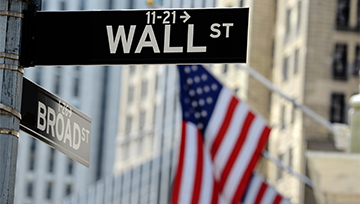Talking Points:
- Most market participants worry about opportunity while too few consider where value is coming from
- There are times when market levels diverge from value - high return and low risk is a 'free lunch', the alternative a problem
- Our current market conditions reflect a troubling over-indulgence that could very well have no alternative end but a crisis
See how retail traders are positioning in the FX majors, indices, gold and oil intraday using the DailyFX speculative positioning data on the sentiment page.
Do you pause to consider what the true value of a trade you are going to place? I don't mean an assessment of the technical pattern the asset may be carving out or even the favorable data print's contribution to an underlying fundamental theme. The value I am speaking of runs more to the systemic level. At its foundation, all investment is placed in the pursuit of return at the risk of possible loss of one's initial funds. The basic equation amounts to a higher risk earning greater return and vice versa. This may seem obvious on the face of it, but I certainly don't consider the weight of this arithmetic enough; and my impression is that many others forgo that very assessment for a temporary trade setup - what most investors would consider chasing 'noise' in the overall 'signal' of the trend. Yet, when the cost to enter the market deviates significantly from the true value of the market, it could be a signal of considerable opportunity or potentially destabilizing risk. We face one of those scenarios right now.
Situations do occur in the annals of market history where there is an inordinately high rate of return despite a low accompanying risk to the exposure. This is often referred to as a 'free lunch' and you can imagine what happens when they pop up: well-informed and very-observant market participants jump on them. Though imperfect, I use the analogy of exchange rates keeping close relative value through cross exchange rebalancing (what is in financial circles referred to as 'triangular arbitrage'). If there was a difference between EUR/USD and a synthetic of the same pair approximated through a EUR/JPY and USD/JPY exposure, there would be a virtually risk-free trade. Yet, in a market this liquid and transparent, rarely does such an instance occur. There are large market participants that dedicate a lot of money to exactly this game. When 'free lunches' do occur, they are snapped up and their 'resolution' can be abrupt but is rarely disruptive. That is not true for the opposite scenario.
More frequent than free lunches in the financial markets are instances when prices for assets far outstrips the value they represent. We currently find ourselves in just such an environment from the most familiar benchmark (like the S&P 500) to the most arcane (high risk derivatives). What leads the market to such situations changes from period to period. One of the most obvious and powerful forces in our current off kilter market is central bank policy. The world's largest monetary authorities scrambled at the height of the Great Financial Crisis to stabilize the global system and to ward off a more crippling recession. They were successful after an aggressive effort over the span of 2 to 4 years. But then they kept on going. They lower rates to near zero - some actually to zero and a few even into negative territory - and continued to venture into unorthodox stimulus programs. This flooded the market with an abundance of capital to invest, yet the opportunities remained the same and even contracted in some instances. The result was rapid asset inflation - an increase in cost without the value. What is most troublesome in this gap is that the rebalancing is nearly always disruptive, frequently spurring on economic and financial crises. So, what is the value of your exposure? We focus on the imbalance of risk and reward for traders and entire markets in today's Strategy Video.


To receive John’s analysis directly via email, please SIGN UP HERE





